Surround sound is exactly what it sounds like: a category of products and technologies designed to immerse you in audio from all sides, all angles, and, increasingly, from all heights too.
We’re going to take a very deep dive into exactly how it works and the technologies that brought us to today’s state of the art. That includes surround sound technologies, 3D audio formats like Dolby Atmos, and everything you need to know about getting great surround sound — including links to our guides on more specific topics. Let’s start with a look at the latest Dolby Atmos, currently one of the most important standards to look for when putting together a home theater.
Objectively better sound
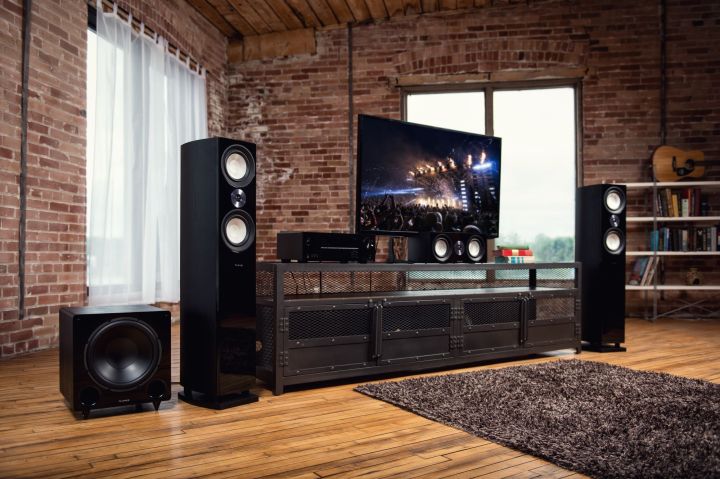
Movie theater speakers have always been able to crank out some serious decibels, but before Dolby Atmos, they weren’t all that sophisticated in terms of their underlying tech. For instance, if you were watching an action movie and there was an explosion on the right side of the screen, half of the speakers in the theater would all play that same sound.
With Atmos, the sounds in a theater could now come from distinct locations determined by the professional audio mixers that had arranged them. Known in the industry as “object-based” sound technology, Atmos allowed for up to 128 distinct sound objects to be represented in a given scene, which could be routed to up to 64 different speakers.
Competitors like Digital Theater Systems (DTS) soon followed suit, with the company boasting that its DTS:X technology could produce more individual audio feeds than Atmos, which was hard-capped at 64. This meant that, theoretically, theater operators were limited only by their appetite to add extra speakers and amplification.
With the development of compatible AV receivers, the battlefield quickly shifted to the living room. Today, most quality AV receivers support object-based surround sound, and the tech that helped revitalize movie theaters was made available in the home.
Digital music has also gotten the Atmos treatment, with a number of streaming services (Tidal, Amazon Music, and Apple Music, to name a few) already taking advantage of Dolby Atmos Music, an offshoot of its theatrical, object-based sound technology.
Atmos isn’t the only payer in this space, either, as competitors like DTS:X and Sony’s 360 Reality Audio will look to challenge Dolby for sonic supremacy in the months and years ahead.
This being a top-to-bottom surround sound guide, however, we need to journey back before we can move forward. If you’re a layperson looking to understand how Atmos and its competitors can revolutionize your home theater, you’ll need a quick surround sound primer and a brief history lesson before building your setup.
Surround sound 101
We’ll get to the history of surround sound and the specs of all the competing formats in just a minute — but first, let’s get the basics out of the way. Understanding a few core concepts will help orient you so that you can follow the conversation to come, so here’s what you should know before we get down to the nitty-gritty:
The speakers
Surround sound, at its most basic, involves a set of stereo front speakers (left and right) and a set of surround speakers, which are usually placed just to the sides and just behind a central listening position. The next step up involves the addition of a center channel: A speaker placed between the front left and right speakers that is primarily responsible for reproducing dialogue in movies. Thus, we have five speakers involved. We’ll be adding more speakers later (lots more), but for now, we can use this basic five-speaker arrangement as a springboard for getting into the different formats.
The matrix
No, we’re not talking about the sci-fi franchise starring Keanu Reeves. In this case, matrix refers to the encoding of separate sound signals within a stereo source. This approach was the basis for early surround-sound formats like Dolby Surround and Dolby Pro Logic and was motivated in part by the limited space for discrete information on early audio-video media, such as VHS tape.
Pro Logic
Using the matrix process, Dolby’s Pro Logic surround was developed to encode separate signals within the main left and right channels. Dolby was able to allow home audio devices to decode two extra channels of sound from media like VHS tapes, which fed the center channel and surround speakers with audio. Because of the limited space, however, matrixed surround signals came with some limitations. For instance, the surround channels in basic Pro Logic were not in stereo and had limited bandwidth. That means that each speaker played the same thing and the sound didn’t involve much bass or treble information.
Surround sound history
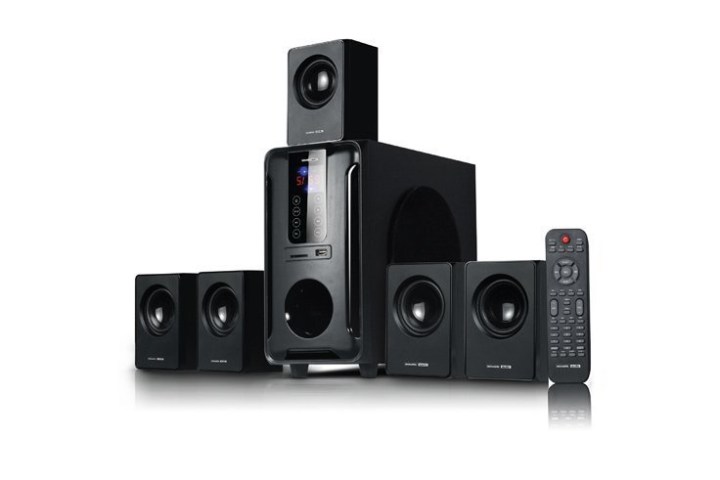
OK, so now that you know what surround sound is and what the current state-of-the-art tech is capable of, let’s talk about how we got here.
It was the summer of 1969 when surround sound first became available in the home. It was called Quadraphonic sound, and it first appeared on reel-to-reel tape. Unfortunately, Quadraphonic sound, which provided discrete sound from four speakers placed in each corner of a room, was confusing and short-lived — no thanks to companies battling over formats (sound familiar?). Immersion in a three-dimensional audio sphere was not to be given up on, however.
In 1982, Dolby Laboratories introduced Dolby Surround, a technology that piggybacked a surround sound signal onto a stereo source through matrix encoding. Since then, Dolby, DTS, and others have helped advance the state of home surround sound with a variety of iterations. In the next section, we trace this evolution — from the standard 5.1 setups to state-of-the-art, object-based surround.
Surround sound takes shape
Dolby Digital 5.1/AC-3: The benchmark
Remember LaserDisc? Though the medium was first invented in 1978, it wasn’t until 1983, when Pioneer Electronics bought a majority interest in the technology, that it enjoyed any kind of success in North America. One of the advantages of LaserDisc (LD) was that it provided a lot more storage space than VHS tape. Dolby took advantage of this and created AC-3, now known as Dolby Digital. This format improved on Pro Logic in that it allowed for stereo surround speakers that could provide higher bandwidth sound. It also facilitated the addition of a low-frequency effects channel — the “.1” in 5.1 — handled by a subwoofer. All the information in Dolby Digital 5.1 is discrete for each channel — no matrixing necessary. Sorry, Keanu.
With the release of the film Clear and Present Danger on LaserDisc, the first Dolby Digital surround sound hit home theaters. By the time DVDs came out in 1997, Dolby Digital had become the default surround sound format. To this day, Dolby Digital 5.1 is considered by many to be the surround sound standard and is still included on most Blu-ray discs.

DTS: The rival
What’s a technology market without a little competition? Dolby more or less dominated the surround-sound landscape for years. Then, in 1993, DTS came along, providing its own digital surround sound mixing services for movie production, first hitting theaters with Jurassic Park. The technology eventually trickled down to LaserDisc and DVD but was initially available on a very limited selection of discs. DTS uses a higher bit rate and, therefore, delivers more audio information. Think of it as similar to the difference between listening to a 256kbps and 320kbps MP3 file. The quality difference is noticeable, but as with so many audio-related comparisons, not everyone was sold on it.
6.1: Kicking it up a notch
In an effort to enhance surround sound by expanding the “soundstage,” home theater companies created 6.1, which added another sound channel. The sixth speaker was to be placed in the center of the back of a room and was subsequently referred to as a back surround or rear surround. This is where some confusion began to swirl.
People were already used to thinking of and referring to surround speakers (incorrectly) as “rears” because they were so often placed behind a seating area. Recommended speaker placement, however, has always called for surround speakers to be placed to the sides and just behind the listening position.
The point of the sixth speaker is to give the listener the impression that something is approaching from behind or disappearing to the rear. Calling the sixth speaker a “back surround” or “surround back” speaker, while technically an accurate description, ended up being just plain confusing.
To make things even more confusing, each company offered different versions of 6.1 surround. Dolby Digital and THX collaborated to create a version referred to as “EX” or “surround EX.” It uses the tried-and-true matrix encoding method to embed the sixth channel inside the left and right surround signals.
DTS, on the other hand, offered two separate 6.1 versions. DTS-ES Discrete and DTS-ES Matrix perform as their names suggest. With ES Discrete, specific sound information is programmed onto a DVD or Blu-ray disc, while DTS-ES Matrix uses the same technique as Dolby Digital EX to extrapolate information from the surround channels.
7.1: The spawn of Blu-ray

Just when people started getting used to 6.1, along came 7.1 in conjunction with HD DVD and Blu-ray discs as the new must-have surround format, essentially supplanting its predecessor. Like 6.1, there are several different versions of 7.1, all of which add in a second back surround speaker.
Those surround effects that once went to just one rear surround speaker could now go to two speakers in stereo. The information was also “discrete,” which means that every speaker got its own specific information. This development was enabled, in part, by the massive storage potential of Blu-ray.
Those who bought a dedicated back surround speaker during the shift to 6.1 now found themselves shopping for a new, matched pair of back surrounds — typically the exact same model they had bought for the left and right surrounds.
Dolby offers two different 7.1 surround versions. Dolby Digital Plus is the “lossy” version. Instead of using matrixing, it applies lossy compression to all of the discrete audio channels, which helps to take up less space on a Blu-ray disc. Dolby TrueHD, on the other hand, is lossless. This means that no sound information has been removed during compression, and it’s as close to the studio master as you can get.
DTS also has two 7.1 versions, which differ in the same manner as Dolby’s versions. DTS-HD is a lossy 7.1 surround format, whereas DTS-Master HD is lossless.
It’s important to note here that 7.1-channel surround mixes are not always included on Blu-ray discs. Movie studios have to opt to mix for 7.1, and they don’t always do so. There are other factors involved, too, with storage space being chief among them. If a bunch of extras are placed on a disc, there may not be space for additional surround information. In many cases, a 5.1 mix can be expanded to 7.1 by a matrix process in an AV receiver. This way, those back surround speakers get used, even if they don’t get discrete information. This is becoming less common, however, especially when it comes to 4K Ultra HD Blu-ray discs, which often support multiple seven-channel mixes.
9.1: Pro Logic makes a comeback
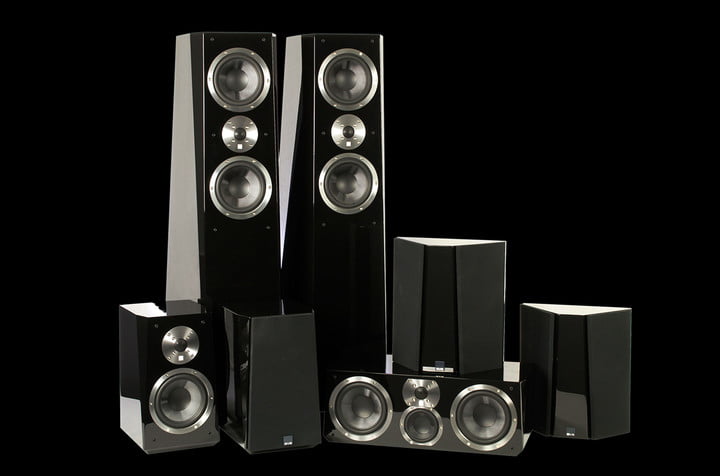
If you’ve been shopping for a receiver, you may have noticed that many offer one or more different versions of Pro Logic processing. In the modern Pro Logic family, we now have Pro Logic II, Pro Logic IIx, and Pro Logic IIz. Before we continue, let’s take a quick look at what each of them does.
Pro Logic II
Using the same matrixed four-channel sound as the original Pro Logic, Pro Logic II can create a 5.1 surround sound mix from a stereo source. Pro Logic II also has another trick up its sleeve: It can separate the surround signal into stereo left and right channels instead of the original Pro Logic’s dual-mono presentation. This processing mode is commonly used when watching non-HD TV channels with a stereo-only audio mix.
Pro Logic IIx
If your video source is presented in 5.1 surround — and your home theater system supports additional speakers — Pro Logic IIx can take that mix and expand it to 6.1 or 7.1. Pro Logic IIx is subdivided into movie, music, and game modes.
Pro Logic IIz
Pro Logic IIz allows the addition of two “front height” speakers that are placed above and between the main stereo speakers. This form of matrix processing aims to add more depth and space to a soundtrack by outputting sounds from a whole new location in the room. Since IIz processing can be engaged with a 7.1 soundtrack, the resulting format could be called 9.1.
Despite the addition of these height channels, Pro Logic IIz does not enable a true 3D placement of sounds. To enable that, you’ll need Dolby Atmos or DTS:X, which we describe below.
What about 7.2, 9.2, or 11.2?
As we mentioned previously, the “.1” in 5.1, 7.1, etc., refers to the LFE (low-frequency effects) channel in a surround soundtrack, which is handled by a subwoofer. Adding “.2” simply means that a receiver has two subwoofer outputs instead of one. Both connections output the same information since, as far as Dolby and DTS are concerned, there is only one subwoofer track. Since AV receiver manufacturers wanted to market the additional subwoofer output, the notion of using “.2” was adopted.
For most people, a single subwoofer will provide ample low-end bass and rumble. However, adding a second sub can enhance this effect, especially in larger media rooms. Check out our subwoofer placement guide to learn why a second sub might be right for you.
Audyssey DSX and DSX 2
Audyssey, a company best known for its auto-calibration software found in many of today’s AV receivers, has its own surround solution called Audyssey DSX. DSX also allows for additional speakers beyond the core 5.1 and 7.1 surround formats, upmixing 5.1 and 7.1 signals to add more channels. With the addition of front width and front height channels on top of a 7.1 system, Audyssey allows for 11.1 channels of surround sound.
There’s also Audyssey DSX 2, which adds upmixing of stereo signals to surround sound. With the advent of object-based 3D formats like Dolby Atmos and DTS:X in recent years, however, Audyssey has seen a decline.
3D/object-based surround sound
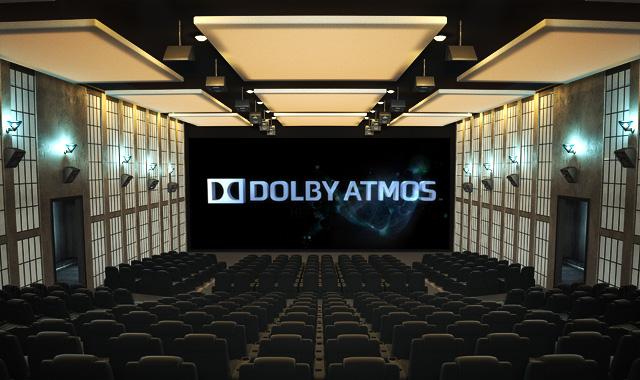
As we mentioned earlier, the latest and greatest development in surround sound is known as “object-based” or “3D” surround. For viewers, “3D” offers the best description of this technology because of its ability to make sounds feel as though they are moving through space. For instance, you might hear a helicopter take off from in front of you, hover over your head, and then disappear into the distance behind you.
“Object-based,” on the other hand, is the moniker preferred by the sound professionals who create these 3D soundtracks because it describes their ability to move a single sound-producing object (like a helicopter) anywhere in 3D space.
This immersive hemisphere of sound is made possible by adding discrete channels for ceiling-mounted or ceiling-facing speakers in AV receivers at home.
Because these channels no longer need to extrapolate their signals from audio running to other speakers as they did with Pro Logic IIz 7.1, they get their own number. A 5.1.2 system, for example, would feature the traditional five channels and a subwoofer, but it would also feature two additional speakers adding height information in stereo at the front. A 5.1.4 system would add four additional height channels to 5.1, including two at the front, two at the rear, and so on.
Dolby Atmos
This shouldn’t come as a surprise after reading the rest of this article, but Dolby is the current leader in object-based surround sound technology. We’ve been over Atmos’ bid to revolutionize the movie theater experience, but what about home theaters?
Atmos in the home
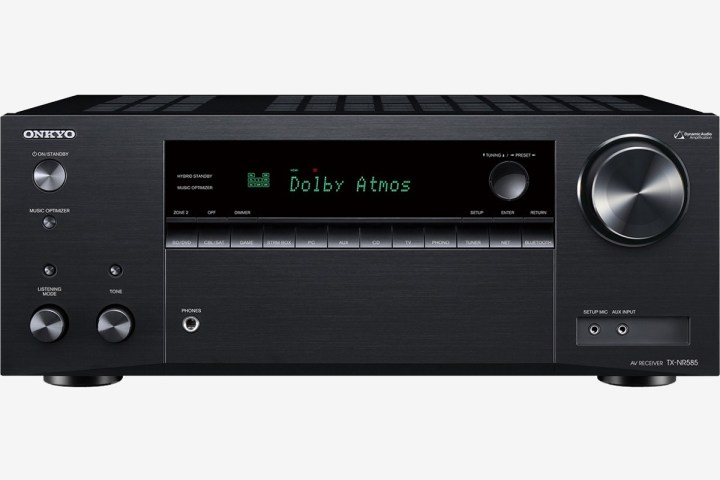
Atmos debuted on compatible AV receivers in 2015, but in a much more limited capacity than the professional format. As mentioned above, the most common configurations are 5.1.2 or 5.1.4, which add two and four height speakers to a traditional 5.1 surround setup respectively, though Dolby supports much larger configurations. Atmos took off relatively quickly, and most AV receivers above the low-end range of the spectrum now support the format. In fact, every receiver on the list of our favorite AV receivers supports Atmos, even models priced at $500 or less.
In 2015, Yamaha introduced the first Atmos-capable soundbar, the YSP-5600, which uses up-firing drivers to bounce sound off the ceiling. Since then, soundbar manufacturers have fully embraced Dolby Atmos. Some achieve the Atmos effect using dedicated wireless surround speakers with up-firing drivers to complement the front speakers in the bar. Others use a technique known as virtualized Dolby Atmos to convincingly simulate the Atmos effect using fewer speakers.
Some TVs, like LG’s line of superb OLED TVs, claim Dolby Atmos support through the TV’s built-in speakers. Because Dolby Atmos can be calibrated for as few as two channels, we suppose this is technically accurate. However, buyers should be aware that two-channel Atmos will never sound as good as discrete 5.1.2 or better Atmos.
Movies with Dolby Atmos soundtracks are now very common on Blu-ray and Ultra HD Blu-ray discs. Moreover, streaming sites like Netflix, Vudu, Amazon Prime Video, Disney+, and Apple TV+ all offer a selection of Atmos movies and shows. Atmos is even starting to appear in some live broadcasts. Recent examples include the 2018 Winter Olympics, the NHRA’s live drag-racing events, and even a few music festivals.
One thing to keep in mind with Dolby Atmos: It’s a finicky beast. In order to hear Dolby Atmos sound, every part of your home theater system — from the source to the speakers — needs to support it. Here’s our full guide to getting great Dolby Atmos sound.
Dolby Atmos Music
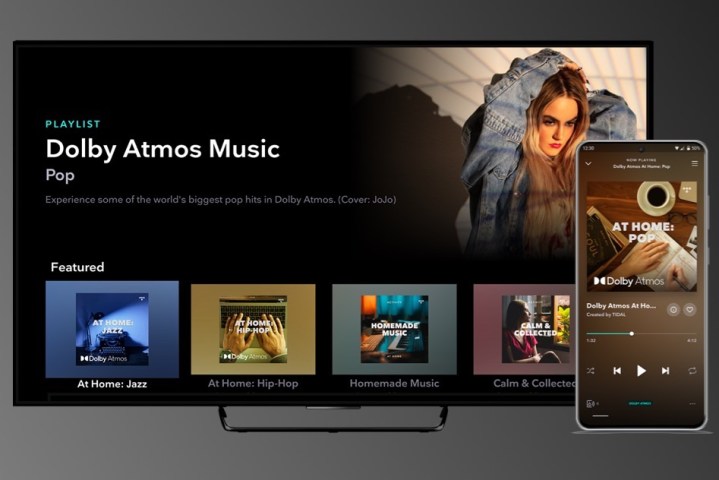
Though still in its early stages, Dolby Labs has been working with major record labels and streaming services to develop the use of Dolby Atmos technology for music production. The concept is simple: Dolby Atmos Music uses all the same object-oriented 3D audio tools as the movie soundtrack version but puts them in the hands of professional music producers.
The result is immersive music that goes well beyond what traditional two-channel stereo or even quadraphonic sound can achieve. Unfortunately, Dolby Atmos Music is very limited at the moment. The only way to hear it using a Dolby Atmos-equipped home theater is to buy one of the very few Blu-ray discs that contain a Dolby Atmos Music mix, like the recently remastered and rereleased Kick by INXS.
Amazon Music HD recently became the first music streaming service to offer Dolby Atmos Music tracks, but the only way you can hear them is via Amazon’s Echo Studio 3D smart speaker.
In a few select clubs, Dolby Atmos Music is being used by DJs and other live performers to produce an immersive music environment for dance floors.
Hopefully, Dolby will soon open the floodgates on Dolby Atmos Music and find more ways for folks to experience it.
It’s worth noting that Sony also has a 3D immersive music format known as Sony 360 Reality Audio that competes with Dolby Atmos Music. It too can be found on some streaming services, but as with Atmos Music, the devices needed to hear it are limited to just a few options for the moment.
DTS:X
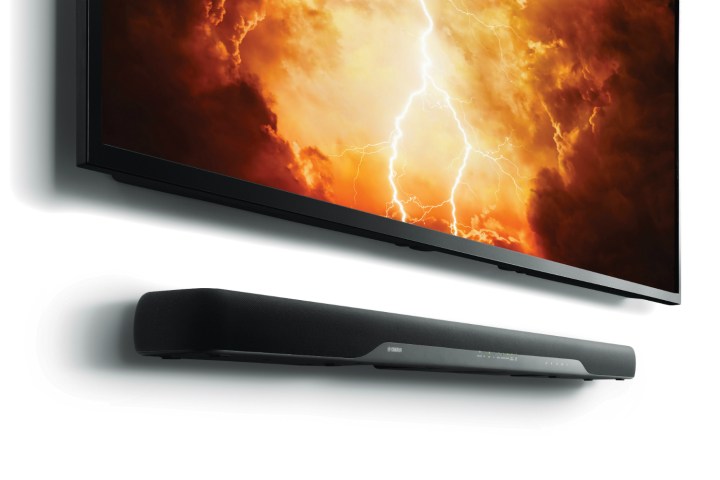
Just as it does with other types of surround sound, DTS has its own version of object-based audio, DTS:X, which was unveiled in 2015. DTS:X aims to be more flexible and accessible than Atmos, making use of preexisting speaker layouts in theaters and supporting up to 32 different speaker configurations in the home.
While DTS:X was previously tacked on in updates for Atmos-enabled AV receivers, it’s now available with newer AV receivers right out of the box. Companies like Lionsgate and Paramount offer home releases in DTS:X, but its lack of widespread adoption on disc-based media — and zero adoption among streaming services — is its biggest limiting factor.
DTS Virtual:X
DTS also recognizes that not all movie lovers have the space or the time to put together an object-based sound system. Research gathered by DTS showed that less than 30% of customers actually connect height speakers to their systems, and less than 50% even bother connecting surround speakers.
To that end, the company developed DTS Virtual:X, which employs digital signal processing (DSP) in an effort to provide the same spatial cues that a traditional DTS:X system would provide, but over a smaller number of speakers, even if you’ve only got two. This technology first rolled out in soundbars, which makes sense, as they often only include a separate subwoofer and maybe a pair of satellite speakers at most. Since then, companies like Denon and Marantz have added support for DTS Virtual:X to their receivers, while Sony has its own virtual surround soundbar that reads DTS:X and Atmos mixes.
Technically speaking, “virtualized” Dolby Atmos and DTS Virtual:X are very similar; however, Dolby prefers not to distinguish between Dolby Atmos implementations. As far as it’s concerned, Atmos is Atmos, whether it’s virtualized through two, three, or five channels, or fully baked using a discrete 5.1.2 or better speaker system.
Auro-3D
Though you may not have heard of Auro-3D until now, it was on the scene well before DTS:X or Atmos appeared. The technology was announced in 2006 for use in theaters but wasn’t available for home theater systems. Thanks to Denon and Marantz pushing it through as a firmware upgrade, you can now use it with your home speakers — though you have to pay for it.
Despite apparent likeness to Dolby Atmos, Auro-3D creates a surround-sound experience through a three-tiered sound system. Multiple speakers really showcase this kind of layered sound. We recommend eleven speakers to get the most out of the sound, making Auro-3D the most expensive setup you can recreate at home. Because Auro-3D usually uses a single overhead channel, its speaker configurations aren’t optimal when used with Dolby Atmos sound.
We haven’t seen a growth in popularity for Auro-3D in the United States, but considering its pervasive usage in Europe and Japan, it’s only a matter of time.
MPEG-H
MPEG-H refers to a whole family of audio and video standards, but for surround sound, we’re interested in a specific part of it: the support for 3D Audio. In this regard, MPEG-H is very similar to Dolby Atmos and allows developers to set an incredible amount of audio objects in a 3D space. It’s also an extremely versatile standard, allowing developers to give users the option to control specific parts of the sound like dialogue or choosing where specific sounds come from. We have a more in-depth guide to MPEG-H right here.
While MPEG-H isn’t as common in North America, you can find it on Brazilian and South Korean broadcasts, as well as a variety of home theater products from brands like Denon and Marantz. As the standard becomes more popular, especially for broadcasts, it could become a sought-after way to watch live TV in 3D audio.
IMAX Enhanced
While it’s a more recent standard, it’s also no surprise that IMAX has its own candidate in the home theater surround sound space, known as IMAX Enhanced. IMAX Enhanced gets a lot of attention for its visual enhancements, which reformat compatibility in movies and turn off all other image optimization to make the movie look more like you’re watching it in IMAX, even up to expanding the aspect ratio.
But IMAX Enhanced also uses part of the DTS:X codec to help home theaters imitate IMAX Signature Sound in an IMAX theater, including the deep bass. This standard is new enough now that it’s not likely to make an impact on your home theater for a few years. It’s also important to note that some content that claims to be IMAX Enhanced doesn’t have any of the DTS:X audio improvements, only the visual changes. That’s a problem for titles like Disney+’s IMAX Enhanced Marvel movies.
In sum …
While it may seem like things are getting more complicated, studio-quality home theater sound is more accessible than ever. Innovations in “object-based” or “3D” surround sound, combined with the addition of dedicated speakers to the standard 5.1 setup have upped the ante, sure — but you don’t need to be a sound engineer or audiophile to create an immersive experience at home. A little bit of research goes a long way, so keep this guide handy as you build your setup and you should have no trouble figuring out what’s right for you. Happy viewing/listening!
Editors’ Recommendations
Credit: Source link


Comments are closed.